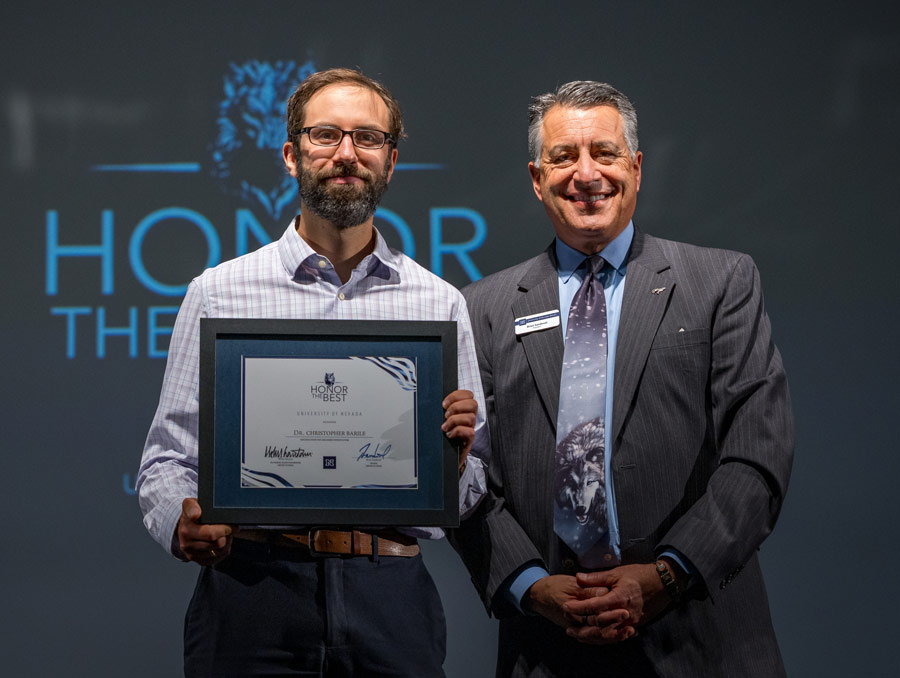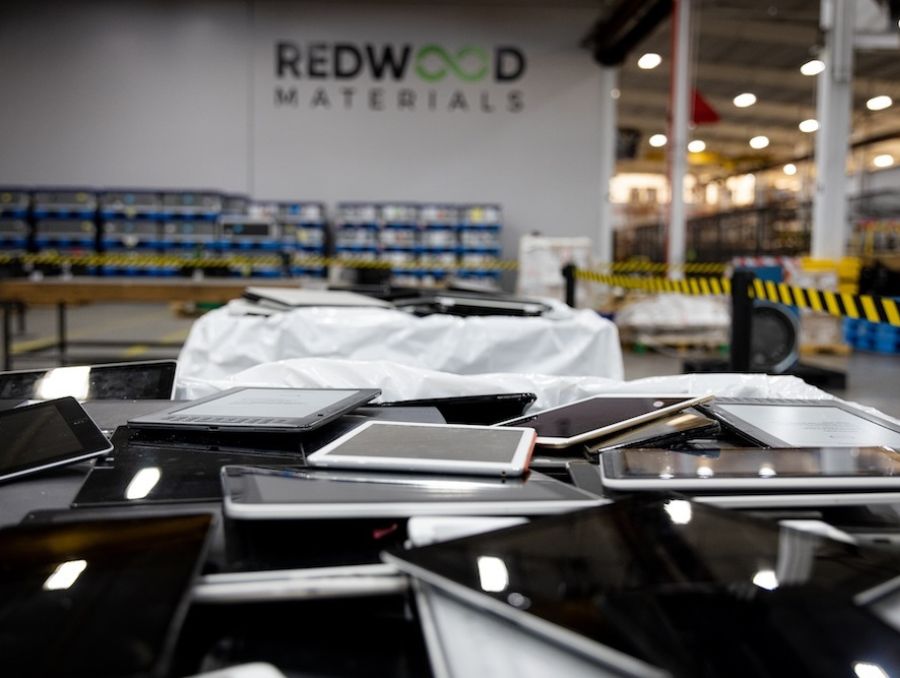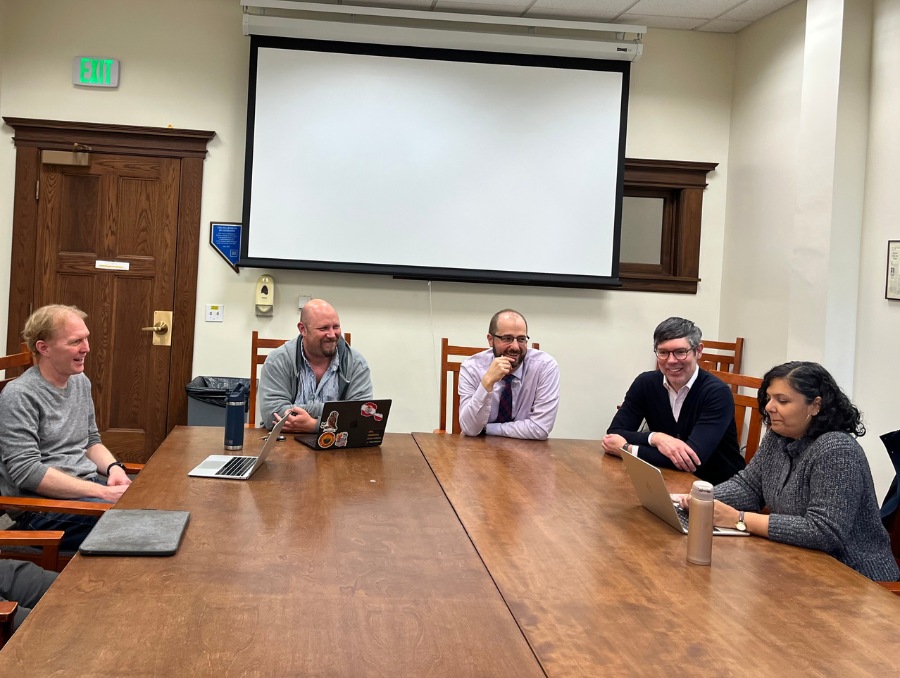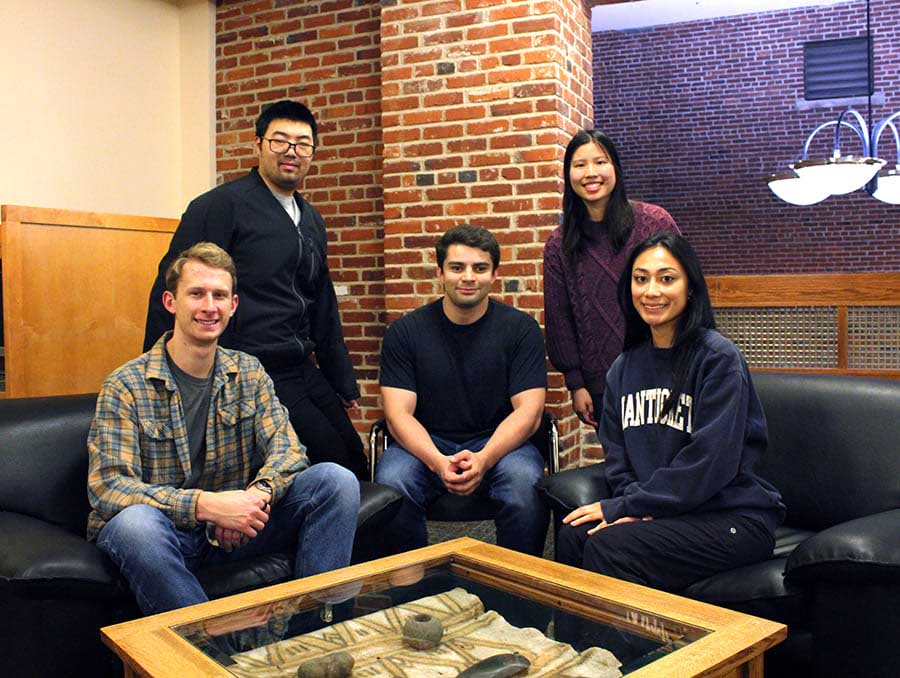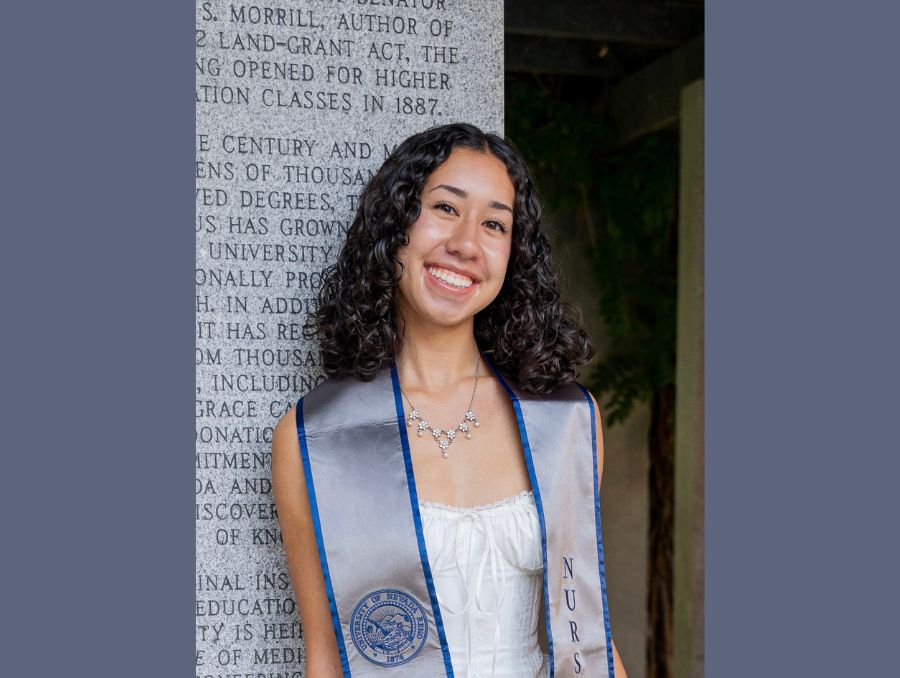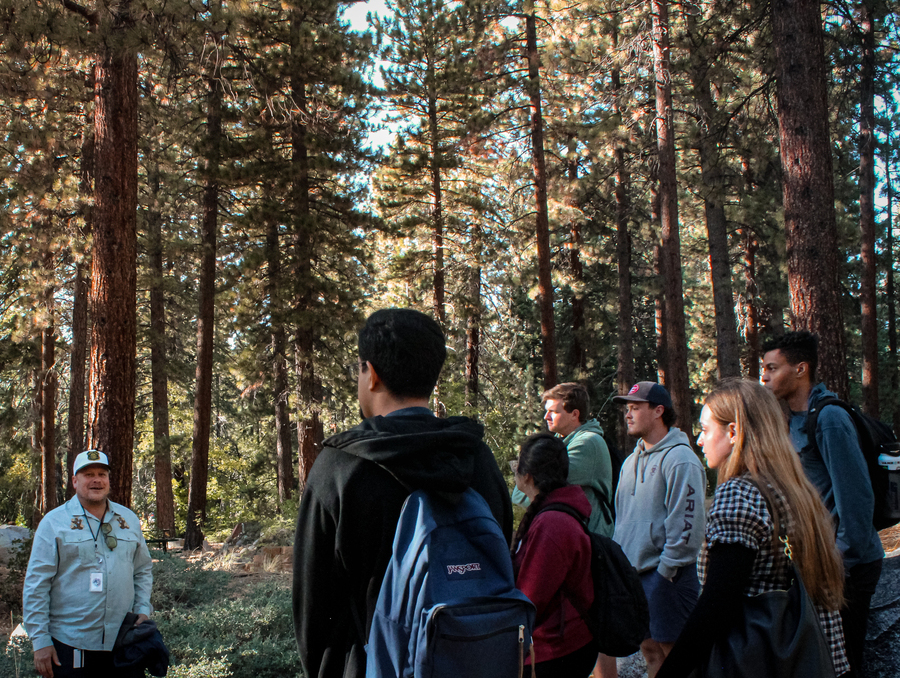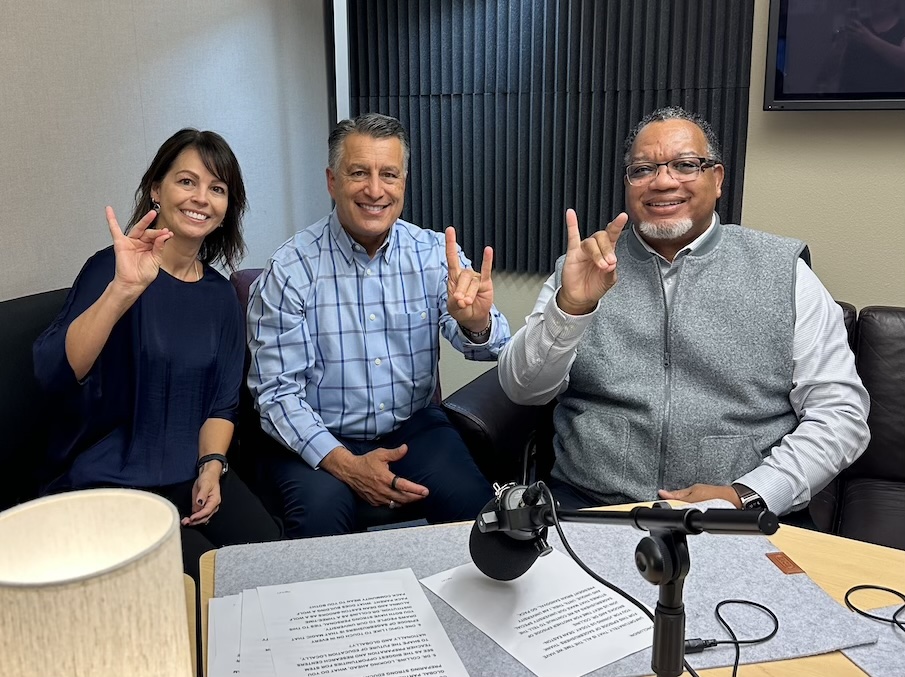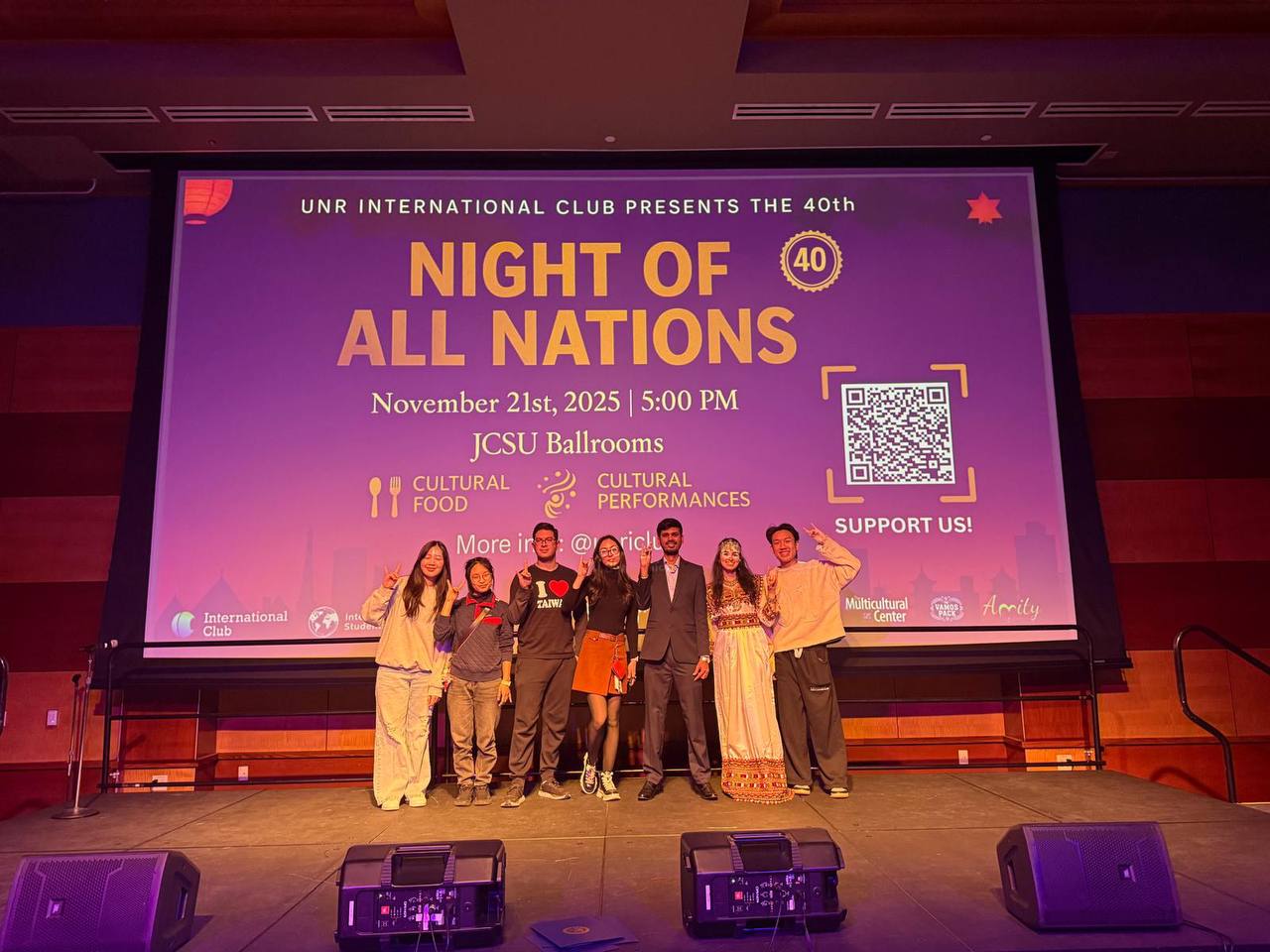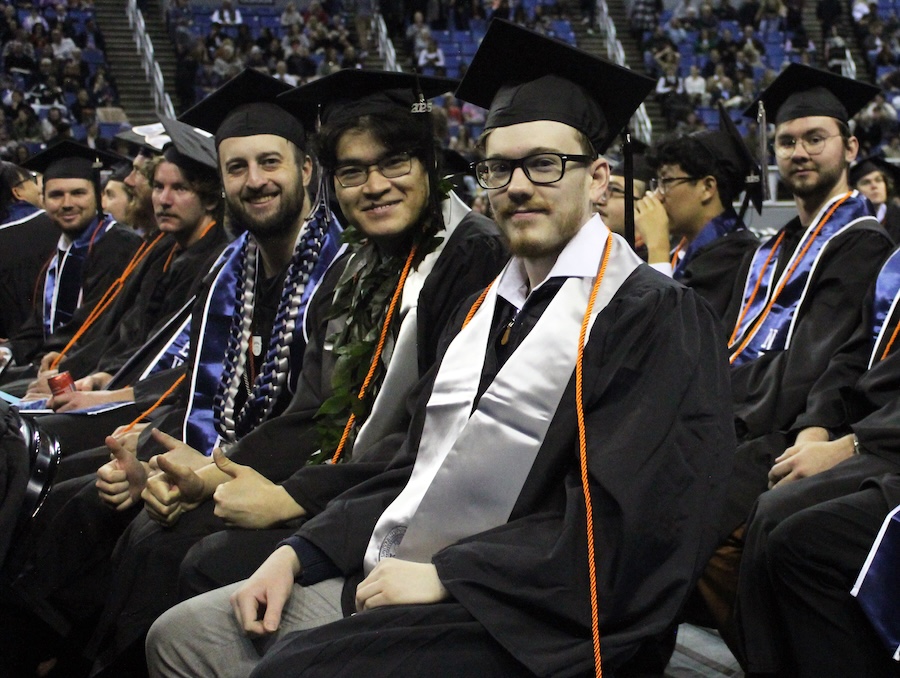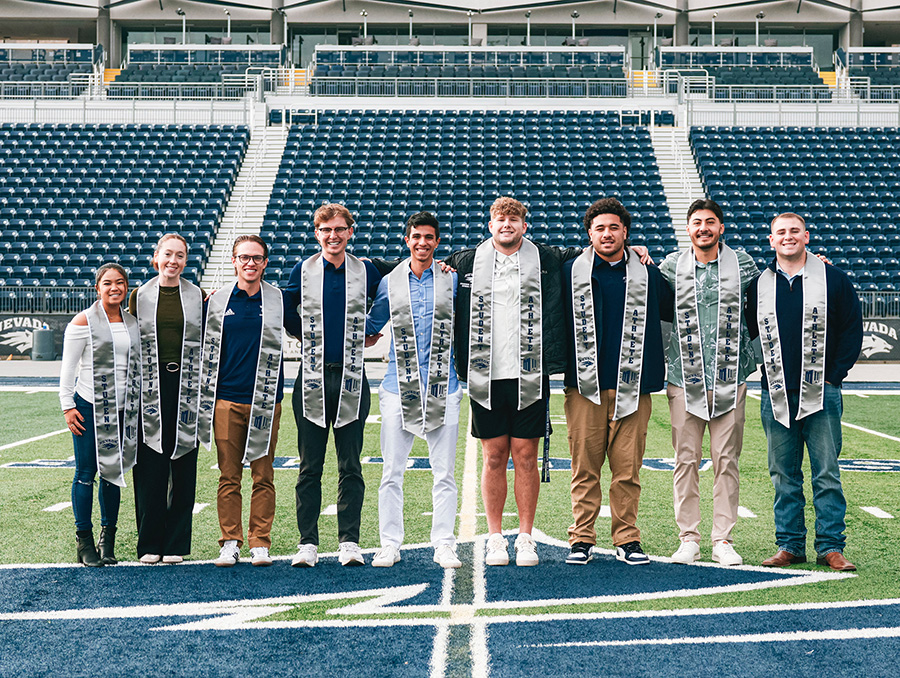Clemons-Magee Endowed Professor in Chemistry Chris Barile was recently named the 2025 Foundation Established Innovator, a University-wide award given by Research & Innovation. Along with being recognized at the annual Honor the Best ceremony on May 13, the award comes with $5,000 Barile can use toward his work. Barile was previously awarded the Foundation Early Career Innovator award, which this year went to his colleague Ying Yang.
Barile’s work in the Department of Chemistry is related to energy conversion, efficiency and storage. His group has developed “dynamic windows” that can become more or less opaque, with the ability to provide energy savings of about 10%. Barile shared some reflections on his work below.
What makes research innovative, in your opinion?
In the context of this award, innovative research is work that leads to inventions or applied research that contributes to the development of a product. This award therefore prioritizes research that is patentable. The broader context of innovation, however, expands beyond applied research and includes the formulation of abstract ideas and new frameworks for generating and testing scientific hypotheses. The latter work can be more impactful in the long run, but its promise is often difficult to see in the present moment. This is why it is critical that we fund both fundamental and applied research as a society.
What research projects of yours do you feel were most innovative?
Over the last eight years, we demonstrated methods to electrodeposit thin films of metals reversibly and uniformly on large-area transparent electrodes. These efforts allowed us to construct dynamic windows based on reversible metal electrodeposition that possess electronically adjustable transmission. Compared to existing electrochromic windows (such as those found on the Boeing 787 Dreamliner), the strategy of using metals to block light promises to lead to cheaper, more durable devices that one day will replace window blinds as more energy-efficient and aesthetically-pleasing fenestration alternatives. This research has led to the development of Tynt Technologies, a spin-out company seeking to commercialize this technology.
How does your field of chemistry lend itself to creativity and innovation?
Chemistry is a foundational science that explains the properties of the fundamental building blocks of the universe. The power of chemistry lies in the ability to manipulate these building blocks to produce limitless permutations of structures, each with unique properties. With this immense capacity to build, the chemist's efforts can be tailored to create new molecules, materials and devices that address a plethora of societal needs.
You've taken on a role leading the curation of speakers for the Energy Solutions Forum. How do these speakers inspire you to be innovative in your research?
It has been a pleasure curating the Energy Solutions Forum, a series made possible by the generous support of Mick Hitchcock. Come join us the first Wednesday of each month during the fall and spring semesters! Collectively, the speakers illuminate the complexity of our energy economy and that it will take a myriad of highly interdisciplinary technological solutions to transition to a more sustainable energy future. The talks have made clear the importance of collaboration, not just among disparate university research areas, but of those that bridge academia and industry. Towards that end, we are witnessing an increase in the number of University of Nevada, Reno-industry partnerships, which is quite exciting. For example, our laboratory recently partnered with Lithium Americas Corporation to develop a method of extracting potassium fertilizer from lithium mining waste.
How does working with your students help you stay creative?
I have found that the longer I work on a research project, the easier it is to become entrenched in my ways of thinking. Because new students are constantly coming into the laboratory, their unique perspectives help our ideas stay fresh. For instance, it was a student's unadulterated perspective that recently allowed us to make a key step forward in our dynamic window research. For years, we had been exploring two metals (bismuth and copper) for reversible metal electrodeposition because we had good reason to believe these two metals were our best options. Shakirul Islam, a graduate student in our group, read a paper one day about zinc-ion batteries and successfully convinced me that zinc windows were worth exploring for an entirely different set of reasons that I had not previously considered. Fast forward to the present and zinc windows are currently our most promising research direction, and we have published several manuscripts and have patent applications on these systems.
What current/upcoming research projects of yours are you most excited about?
One research topic in our laboratory focuses on designing new catalysts to speed up a variety of reactions central to energy conversion devices such as fuel cells and water electrolyzers. We recently developed a new method to control, with molecular-level precision, the design of catalyst surfaces with two different types of metals. These bimetallic architectures have unique reactivity, and we demonstrated in the journal Angewandte Chemie that structures with properly arranged gold and copper atoms can be used to convert carbon dioxide to n-propanol, a valuable chemical feedstock. We are really looking forward to generalizing this idea to many different types of catalysts and reactions.
